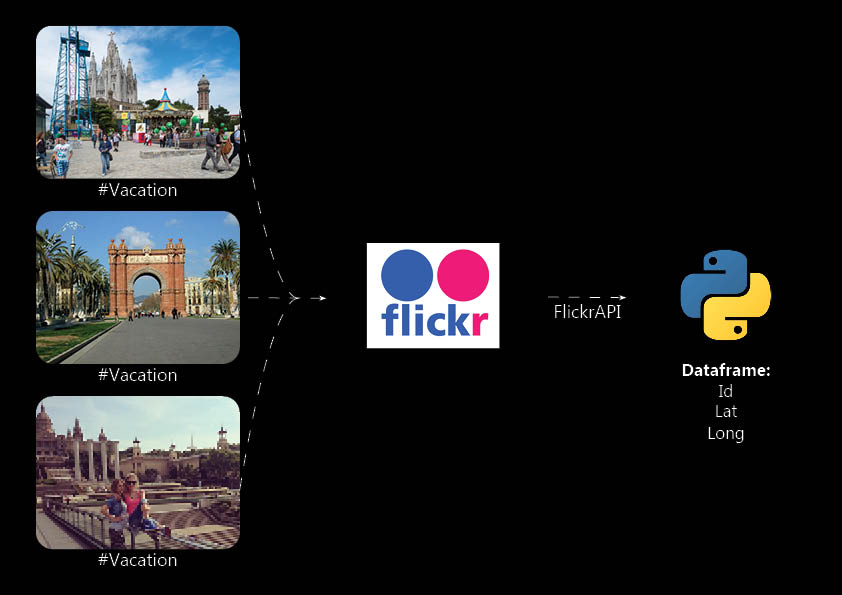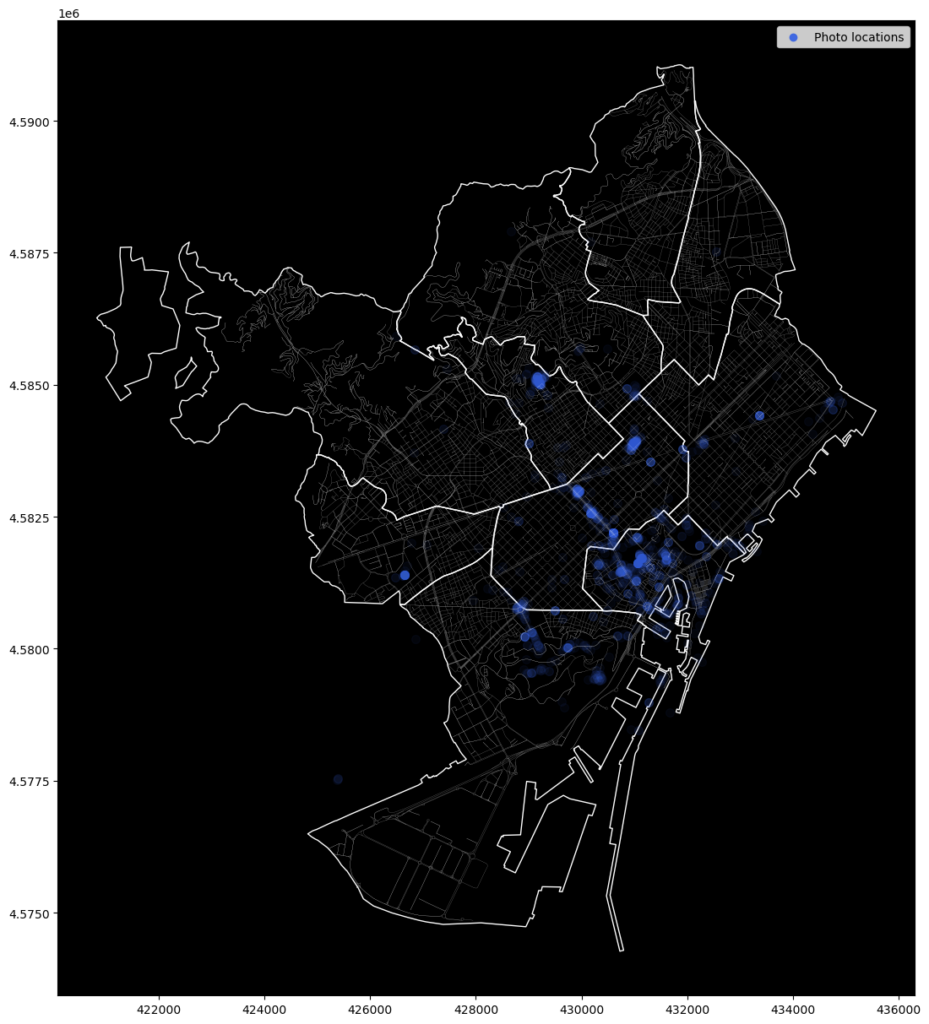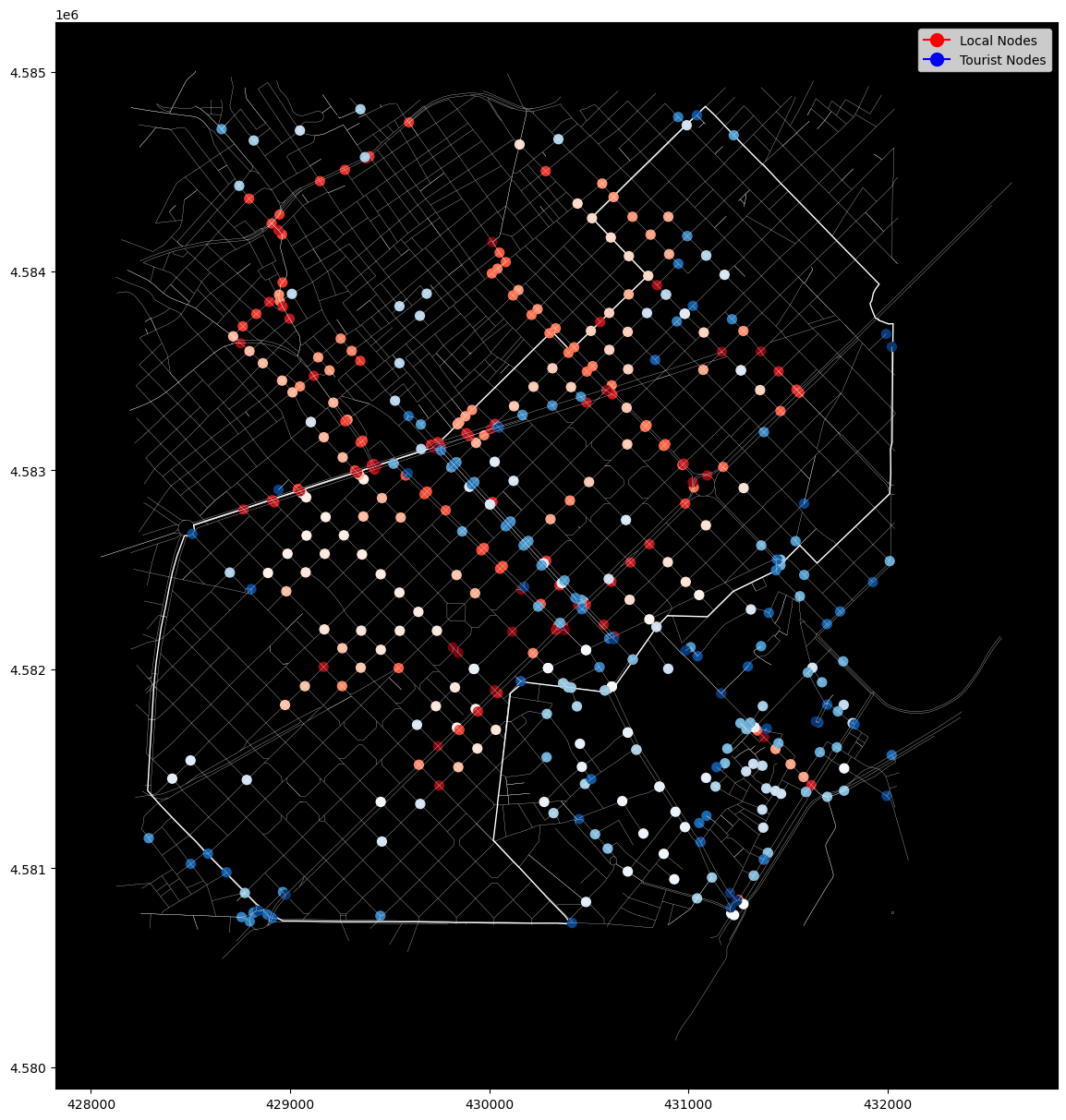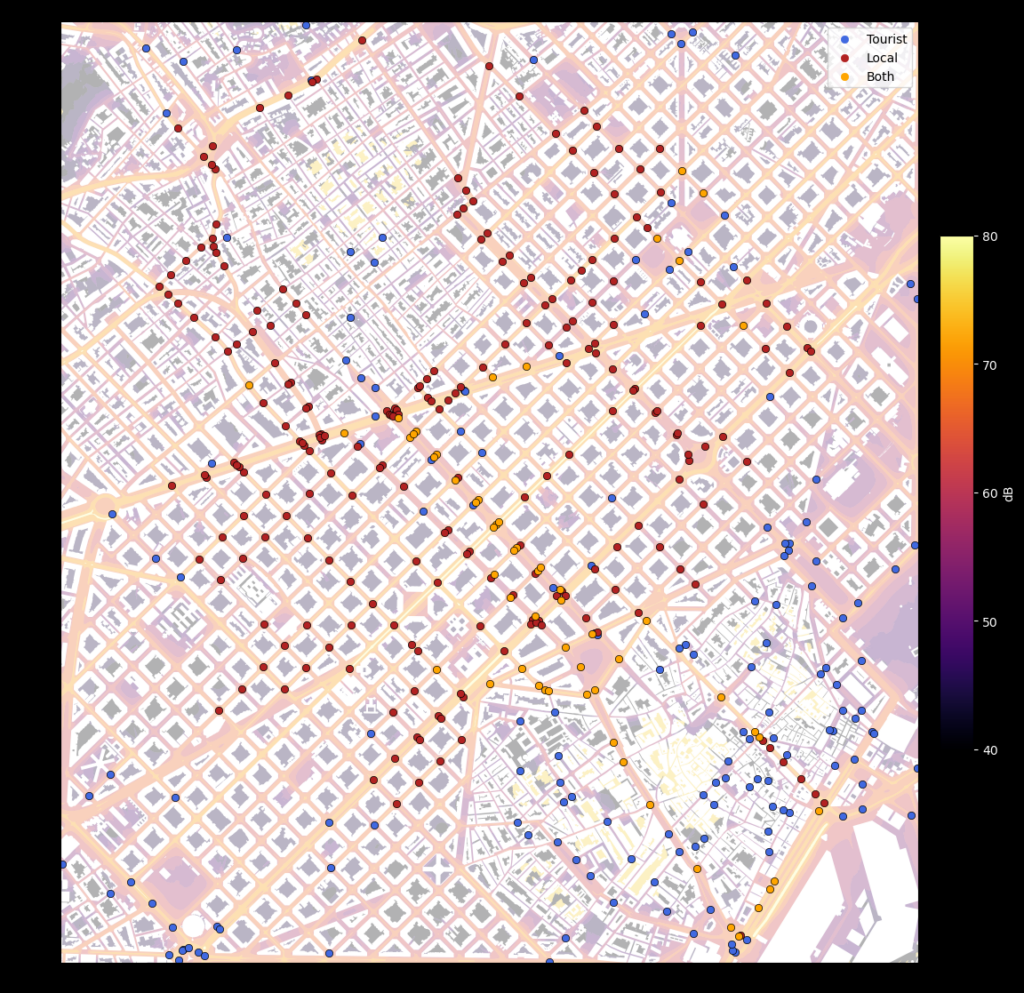Barcelona is a city that in the last decades has become one of the focal points of global mass tourism. Tourists have become part of daily life in the city. The aim of this study was to investigate how tourists and locals experience the city differently, focusing specifically on the topic of noise.

The study required an understanding of the spaces that tourists experience that tourists visit when they come to Barcelona. The method chosen to gather this data makes use of the Flickr API service. By downloading the geolocation of all pictures in Barcelona associated with the text “vacation” and plotting these on a map, a heatmap of tourist activity emerged.

Secondly, it was necessary to create an understanding of the locations most frequented by locals. This was done by running a centrality analysis on the street graph of Barcelona which was downloaded from Openstreetmaps. The analysis was limited to the district of Eixample in order to keep the calculation time of the analysis manageable. The analysis yielded a score of betweenness centrality attributed to every node in the street network.
In order to make the tourist data comparable to the betweenness data the geolocated points were projected to the closest node in the street network and then counted by node. The final step in processing the data was to define criteria which the nodes had to fulfil in order to be considered a “tourist node” (1) or “local node” (2). The criteria were: (1) at least 1 geolocated photo next to a node and (2) in the top 15% quantile of betweenness.

Raw data:

Categorised data, projected on the noise map:

Projecting the two categories of points on the noise map allowed a count by point type and decibel level:

Surprisingly, the results show that the local experience is significantly louder than the tourist experience. There can be several factors that explain this result. Firstly, the street network analysed used the car streets which is sensible for computational memory use, but gives a less accurate result than the full pedestrian network. Secondly, the character of sound influences the experience that they cause. For instance a terrace might have a lower decibel value than a the (white) noise from a busy street but might still be considered a more disturbing factor for people. Thirdly, the time factor was not taken into account when making this analysis. Noise might be more of an issue during the night than during the day and it is a reasonable assumption that touristic places such as the Gothic quarter would have a higher level of noise during those particular hours of the day.

